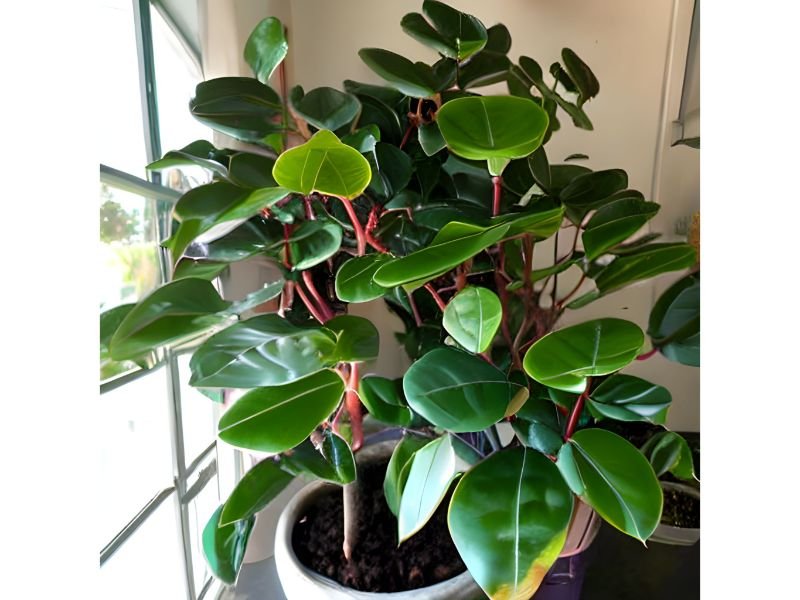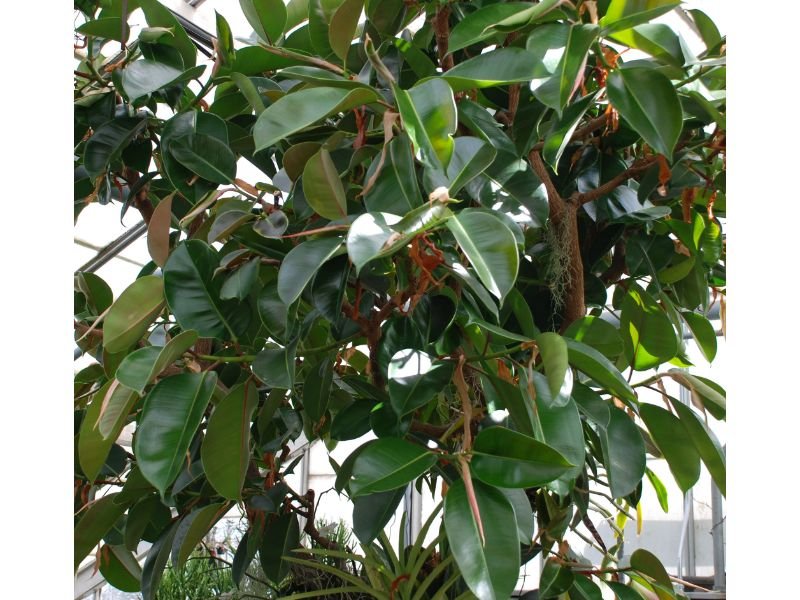The Ficus elastica, also known as the rubber plant, is a popular houseplant that comes in a variety of cultivars. Two of the most common cultivars are Ficus elastica robusta and Ficus elastica decora. Both are known for their large glossy leaves, but they have distinct differences in terms of growth habit, leaf size and color, and care requirements. While both of them are great options for indoor plants, it’s important to understand the differences between them before choosing one for your home or office.


Ficus elastica robusta is known for its fast growth and large leaves, while Ficus elastica decora is known for its smaller leaves and slower growth. The leaves of Ficus elastica robusta are dark green and glossy, while Ficus elastica decora leaves are lighter green with a slightly glossy finish. In terms of care, both of them need bright indirect light, well-draining soil, and consistent moisture. However, Ficus elastica robusta is more tolerant of low light conditions and can survive in a wider range of temperatures.
In this article, we will take a closer look at the differences between Ficus elastica robusta and Ficus elastica decora, in terms of growth habit, leaf size and color, care requirements and suitability in different settings. Whether you’re looking for a statement plant or a more understated option, this article will help you to choose the right rubber plant for your space.
Table of Contents
Comparison of growth habit
Ficus elastica robusta’s growth rate and size

Ficus elastica robusta is known for its fast growth rate and can grow up to 20 feet tall in its native habitat. As a houseplant, it can reach up to 6-8 feet tall indoors. It has a thick trunk and large glossy leaves that can grow up to 12 inches long. It is also known for its aerial roots which can grow from the branches and develop into secondary trunks. This gives Ficus elastica robusta a unique and interesting appearance.
Ficus elastica decora’s growth rate and size
Ficus elastica decora is a slower growing cultivar compared to robusta. It will typically reach a height of 6-8 feet indoors, but it can take longer to reach that size. The leaves of Ficus elastica decora are smaller than robusta’s, growing up to 8 inches long. The leaf color is also lighter green with a slightly glossy finish. It has a more delicate appearance than robusta, and has smaller leaves, making it a better option for small spaces or for those who prefer a more understated look.
The growth habit of Ficus elastica robusta and Ficus elastica decora is quite different. Ficus elastica robusta is known for its fast growth rate and large glossy leaves, while Ficus elastica decora is known for its slower growth rate and smaller leaves with a slightly glossy finish. The growth rate and size of these two cultivars should be considered when choosing between them, as it will affect how quickly your plant will grow and how much space it will take up.
Comparison of leaf size and color
Ficus elastica robusta’s leaf size and color

Ficus elastica robusta has large, glossy, dark green leaves that can grow up to 12 inches long. The leaves are thick and leathery, giving the plant a lush and tropical appearance. Its glossy leaves are a beautiful dark green color which give it an elegant look.
Ficus elastica decora’s leaf size and color
Ficus elastica decora has smaller leaves than robusta, growing up to 8 inches long. The leaves are also glossy, but they have a slightly lighter green color than robusta. The leaves of Ficus elastica decora have a slightly glossy finish, but they are not as dark green as robusta leaves.
The leaf size and color of Ficus elastica robusta and Ficus elastica decora are different. Ficus elastica robusta has large, glossy, dark green leaves, while Ficus elastica decora has smaller leaves with a slightly glossy finish and lighter green color. The leaf size and color should be considered when choosing between these two cultivars, as it will affect the overall appearance of the plant. If you’re looking for a statement plant with large, glossy, dark green leaves, robusta would be a great choice, while if you prefer a more understated look with smaller leaves and a lighter green color, decora would be a better option.
Comparison of care requirements
Ficus elastica robusta’s care requirements
Ficus elastica robusta is relatively easy to care for, but it does require bright indirect light and consistent moisture. It can tolerate low light conditions, but it may not grow as quickly or vigorously. It should be kept in well-draining soil and the soil should be kept consistently moist but not waterlogged. It can tolerate a wide range of temperatures, but it prefers temperatures between 60-85°F. It can also benefit from occasional misting to increase humidity, and regular fertilizing during the growing season.
Ficus elastica decora’s care requirements
Ficus elastica decora also requires bright indirect light and consistent moisture. It prefers slightly more humidity than robusta, but it should be kept in well-draining soil and the soil should be kept consistently moist. It should be protected from drafty areas and extreme temperatures, and it prefers temperatures between 60-85°F. It also benefits from occasional misting to increase humidity and regular fertilizing during the growing season.
The care requirements for Ficus elastica robusta and Ficus elastica decora are similar, both of them require bright indirect light, well-draining soil, and consistent moisture. The main difference between them is that Ficus elastica robusta is more tolerant of low light conditions, and can survive in a wider range of temperatures, while Ficus elastica decora requires slightly more humidity and needs to be protected from drafty areas and extreme temperatures. Both of them benefit from occasional misting to increase humidity and regular fertilizing during the growing season.
Comparison of suitability in different settings
Ficus elastica robusta’s suitability in different settings
Ficus elastica robusta is a versatile plant that can be used in a variety of settings. It’s ideal for use as a houseplant, and can add a touch of greenery to any room. Its large glossy leaves and hardiness make it a great option for commercial or office spaces, as it can help to purify the air and provide a calming and soothing atmosphere. Its fast growth rate and unique appearance make it an excellent choice for landscaping or gardening projects.
Ficus elastica decora’s suitability in different settings
Ficus elastica decora is also a versatile plant that can be used in a variety of settings. Its smaller leaves and slower growth rate make it a great option for small spaces, such as apartments or offices. Its light green color and delicate appearance make it a great option for minimalistic or contemporary interior design styles. Its ability to improve air quality and provide a calming atmosphere also make it a great option for commercial or office spaces.
Both Ficus elastica robusta and Ficus elastica decora are versatile plants that can be used in a variety of settings, such as houseplants, commercial or office spaces, landscaping or gardening projects, and interior design. However, Ficus elastica robusta is better for large spaces, or for those who prefer a statement plant, while Ficus elastica decora is better for small spaces, or for those who prefer a more understated look. Both of them can improve air quality and provide a calming atmosphere, so both of them are great options for commercial or office spaces.
In conclusion
Both Ficus elastica robusta and Ficus elastica decora are great options for indoor plants, but they have distinct differences in terms of growth habit, leaf size and color, and care requirements. It’s important to consider these differences when choosing between them, as they will affect the overall appearance of the plant, and the ease of care.
Whether you’re looking for a statement plant or a more understated option, both Ficus elastica robusta and Ficus elastica decora can improve air quality and provide a calming atmosphere in any space. We encourage readers to consider the differences between these two cultivars when choosing a houseplant, to ensure they get the best option for their space and preferences.

Gardening is my passion and growing plants indoors has always been a stress relief for me. Grow a banana tree in my apartment once (although failed to produce bananas).






